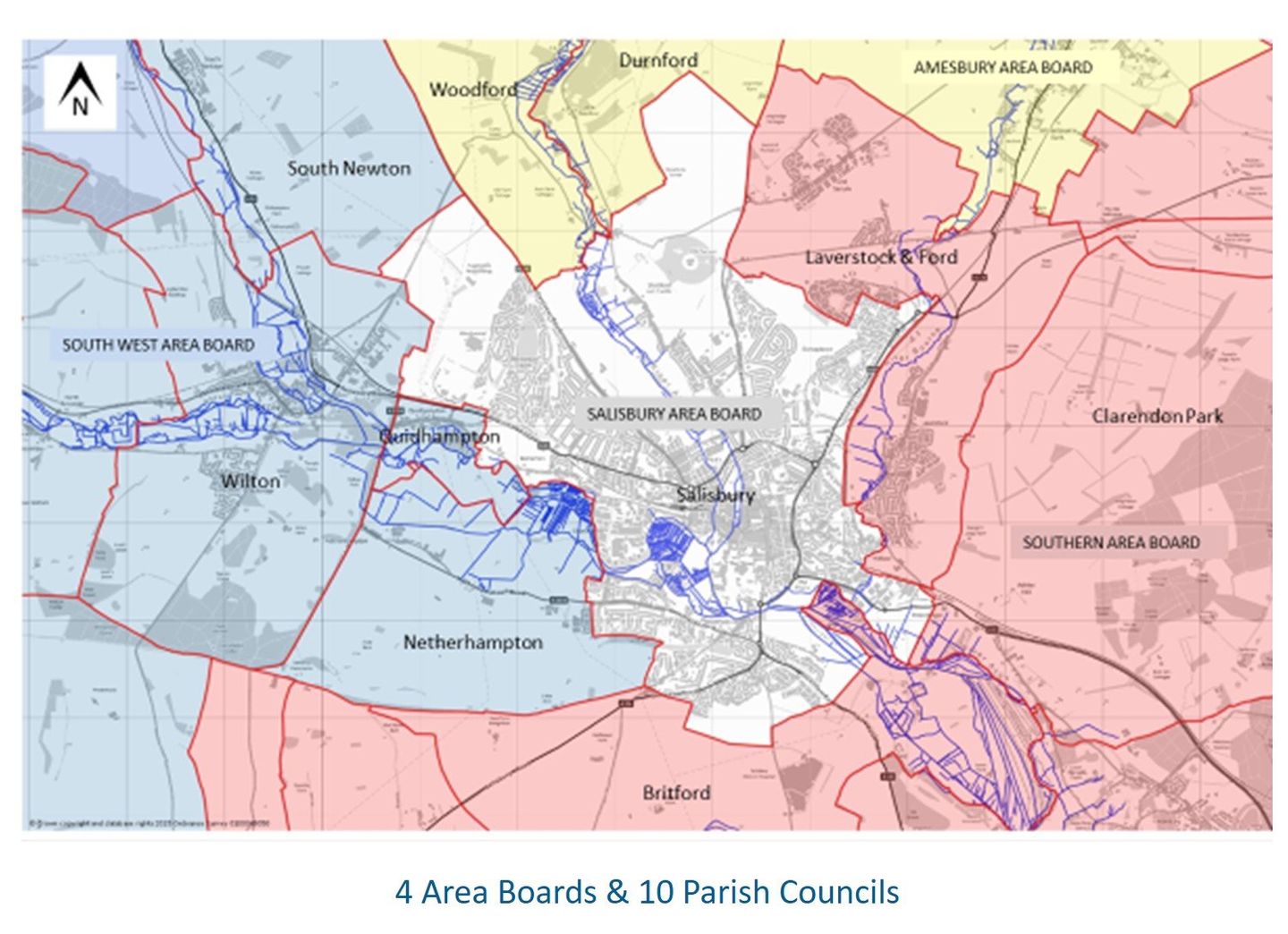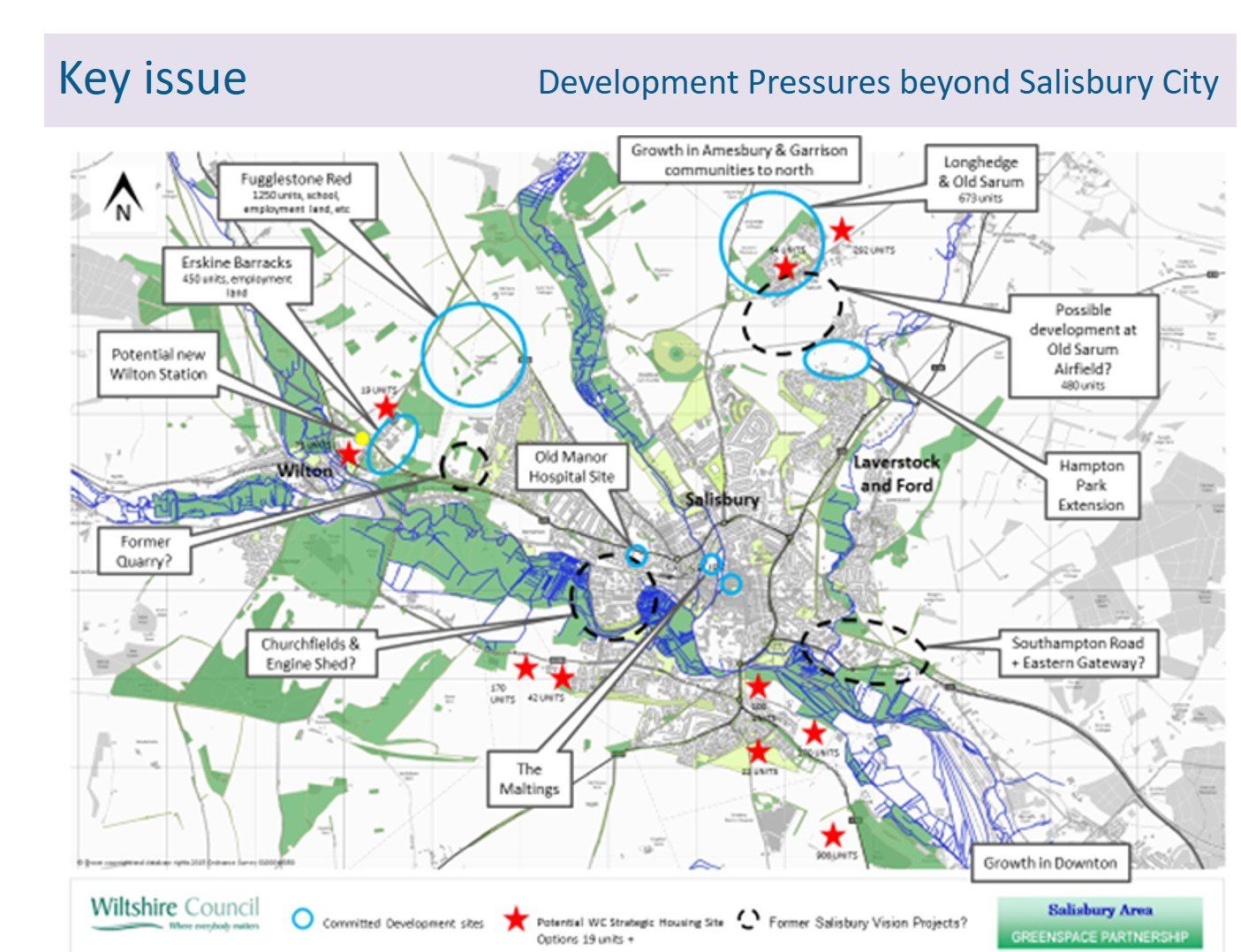Local Issues
Local Issues
The workshops held at the launch of SAGP identified several key issues and challenges that impact locally on the provision and management of greenspace and green infrastructure in this area. These include:
- The complicated administrative setup whereby Salisbury City Council and Area Board are separated from current key growth areas like Laverstock and Ford, and Wilton and potential future growth areas like Netherhampton and Britford means there is no mechanism for coming together to deal with the more strategic issues that cross boundaries.
- Development Pressures
around the periphery of principle settlements like Salisbury.
- The lack of a Wiltshire Green Infrastructure (GI)strategy
or any local GI strategy. This lack of a strong policy framework weakens decision making and results in missed opportunities for the community to benefit from planning gain. Wiltshire’s Core Strategy does not consider green infrastructure as essential infrastructure in line with current government Planning Practice Guidance
- A lack of knowledge about local green spaces
– what and where they are
- Poor connectivity
between existing green spaces and residential areas.
- Fragmented ownerships
– greenspace may be privately owned – by individuals, trusts, large estates and management companies which may not welcome public access, or is in public ownership – local authorities, parish councils, other agencies -highways, housing, play areas, education land, railway companies/franchises. Locally, the asset transfer of greenspace from Wiltshire Council to Salisbury City Council will help this problem of fragmentation
- A lack of resources, skills and vision
for the overall planning and management of current greenspace assets
- Few benefits for wildlife as a result of current management regimes. [eg. ubiquitous grass mowing]
- Problems of overuse and misuse of greenspace
especially on the urban fringe
Key opportunities
With pressures increasing all the time, delegates agreed that it was vitally important for the different interest groups in this area to work together and share resources.
It was important to get an overview of greenspace to ensure that the urban areas in particular are served by well managed and well connected networks of green spaces. It was also agreed that good quality green infrastructure was essential to achieve resilient and sustainable communities because of the benefits it brings.
These include possibilities for safer alternatives for pedestrians and cyclists, safeguarding good habitat and corridors for the wildlife that provide nature’s life support systems as well as the distinctive and special settings of this area, and space for recreation, play, exercise, education and enjoying the natural world.


